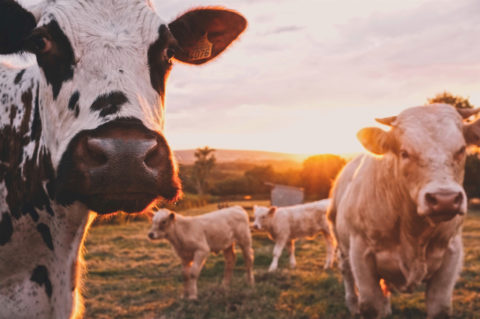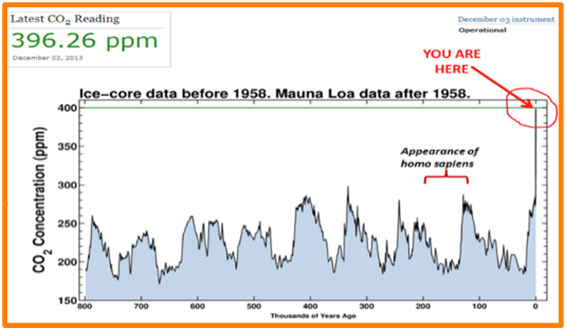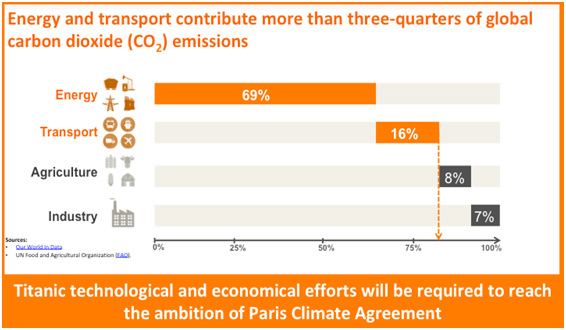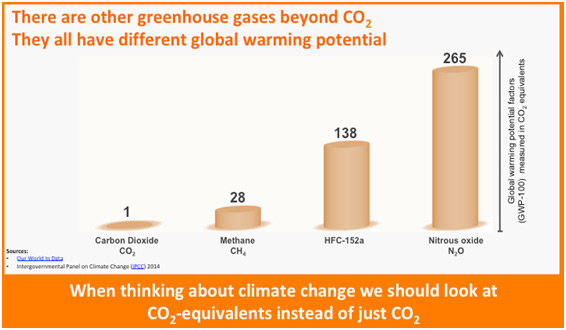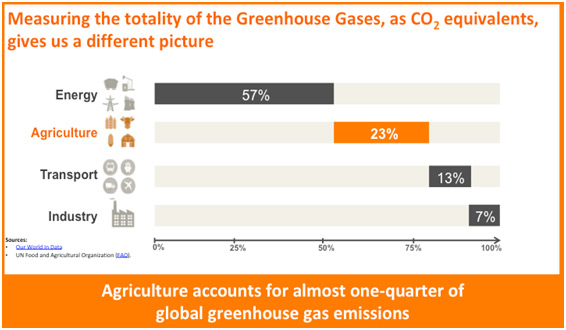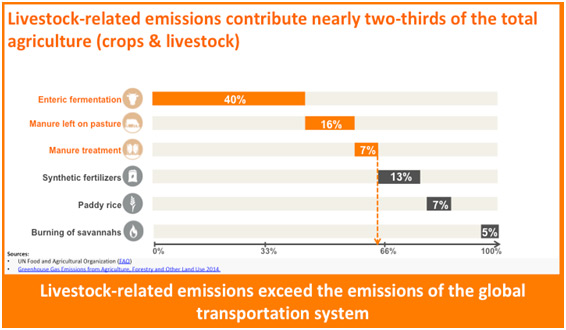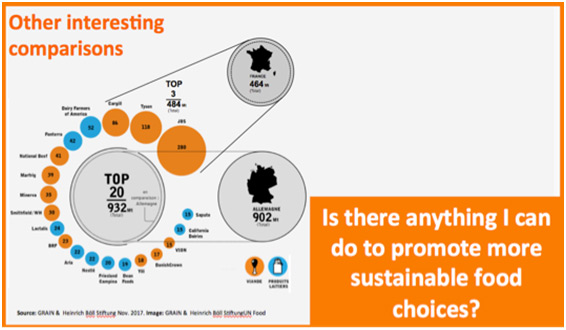Greenhouse gases for dummies
Last year I had the opportunity to consult for an inspiring strat-up based in Zurich, its name is Eaternity and their ambition is “to create the future of gastronomy”; In 2008 Judith Ellens (Eaternity co-founder) had the idea to measure environmental impact of the food served in restaurants and to propose ideas to reduce it, she joined forces with Manuel Klarmann (co-founder and CEO) to start the company and Eaternity AG was finally incorporated in 2014.
Today Eaternity provides a cutting-edge comprehensive management solution for the restaurant industry, already implemented in 74 restaurants. Eaternity solution has helped their customers to deliver 76,034 climate friendly meals and to save 22 Tons of Carbon Dioxide equivalents (CO2e) emissions (86,780 Km driven by an average passenger vehicle).
During this project I’ve got to learn a lot about climate change, greenhouse gases (GHG) and their sources. I would like to share with you what I’ve learned, and I will do it in the form of simple questions and answers, followed by some comments.
About Carbon Dioxide (CO2):
Question: How much CO2 go to the atmosphere from natural processes every year?
Answer: According to the Intergovernmental Panel on Climate Change (IPCC) 150 billion tonnes of CO2 are released to the atmosphere as a result of natural processes of life in earth.
Question: How many tonnes of CO2 are emitted yearly to the atmosphere as a result of human activities?
Answer: According to the Carbon Dioxide Information Analysis Centre (CDIAC) 36 billion tonnes of CO2 were released to the atmosphere as a result of human activities.
Comment: Natural emissions are indeed much larger than anthropogenic (originating in human activity) emissions, but this conclusion comes with some important caveats:
- For roughly the last 10,000 years, since the end of the last glacial period, until the industrial revolution, every tonne of CO2 released to atmosphere was compensated by a tonne of CO2 absorbed by the nature through the natural carbon cycle.
- Human made emission have been growing since the industrial revolution; the CDAIC reported that anthropogenic emissions increased from 2 billion tonnes in 1900 to over 36 billion tonnes in 2015. For the nature to absorb this extra volumes it would have been necessary an increment in its absorption capacity. We know nevertheless the absorption capacity is decreasing due to deforestation.
- We do not need complex mathematics or scientific knowledge to conclude there is more CO2 in the atmosphere now than prior industrial revolution. But for those still sceptical, the analysis of the ice caps confirm the assumption, we have gone beyond the 400ppm, a record value for a very long time as illustrated in the reconstruction of CO2 atmospheric concentrations based on analysis from ice caps.
About greenhouse gas (GHG) anthropogenic sources:
Question: What are the primary anthropogenic sources of CO2?
Answer: It would not be a surprise to anyone if I say the energy and transportation sectors are the primary sources of anthropogenic CO2 emissions. Titanic technological and economical efforts will be required to reach the ambition of Paris Climate Agreement: keep global warming below the 2°C
Question: Are there other GHG?
Answer: Yes, Methane (CH4) and Nitrous Oxide (N2O) are two important greenhouse gases to be considered if we want to have the full picture. There are some other GHG luckily for us in a very small concentration.
Question: Do all the GHG have the same global warming potential?
Answer: No, they don’t. If we consider the global warming potential over a 100 year timescale, we find that 1 tonne of Methane has the same warming effect than 28 tonnes of CO2 and 1 tonne of Nitrous Oxide is equivalent to 265 Tonnes of CO2.
Comment: when we look therefore to the full picture we arrive to a different conclusion, perhaps the efforts required to reach the ambition of Paris Climate Agreement (keep global warming below the 2°C) are not just about technology and economy, perhaps the sum of small individual contributions can be more effective.
About food and agriculture impact on climate change:
Question: Are GHG emission evenly distributed across all agriculture activities?
Answer: No, livestock related emissions contribute nearly two-thirds of the total agriculture (crops & livestock), what actually means that livestock related emissions exceed the emission of the global transportation system.
Other interesting facts:
I found a very self-explanatory info graphic comparing the contribution of the meat and diary industry to climate change in comparison with the contribution of major economies such as Germany and France. I was shocked when I learned that:
- The GHG emissions (CO2e) from the 3 largest meat producers exceed the emissions of France
- The GHG emissions (CO2e) from the 20 largest meat and diary producers exceed the emissions of Germany
In addition, I’ve learned that 80% of the global deforestation is the results of agricultural expansion, and two-thirds of it is actually to produce grain for cattle feed.
Final thoughts:
We are in verge of the biggest food crises in human history, the world economic forum (WEF) writes about a broken global food system:
In one hand we see that climate change is putting at risk agricultural production yields, we are facing issues of water scarcity in some regions and arable surface is becoming a scarce resource in others. In 2016 we had 815 million people undernourished and we have not yet found the solution to feed 10 billion people in 2050.
In the other hand we know that meat production consumes nearly two-thirds of the freshwater on yearly basis, pollutes more than the global transportation system and is responsible for half of the global deforestation.
I think we have therefore a powerful solution in our hands: we need to drastically reduce meat consumption. Easy to say, but would we be able to adapt our habits?
Diego Horcajada
References:
- Our World in Data: a project produced by the University of Oxford and made available in its entirety as a public good
- Our World in Data: CO₂ and other Greenhouse Gas Emissions
- Our World in Data: Meat and Seafood Production & Consumption
- 3 gros producteurs de viande polluent autant que la France entière

